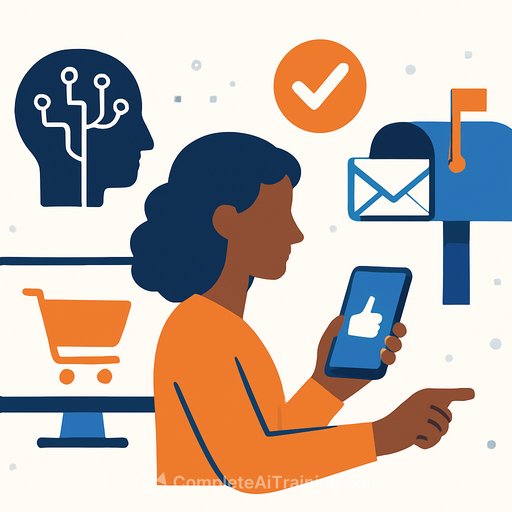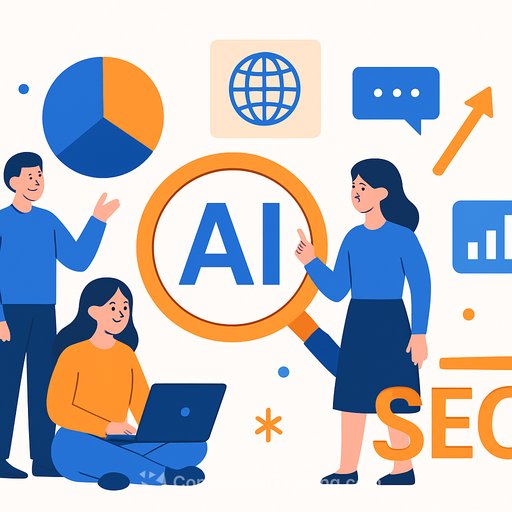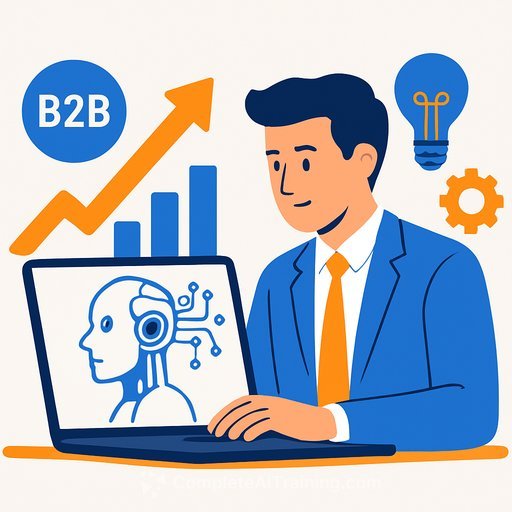AI Is Shrinking Your Digital Reach. Here's Where Growth Comes From Next
AI. Two letters, endless press releases. Budgets shift, dashboards spike, and everyone claims they're "leaning in."
Step back. As one historian warned, "Civilizations die from suicide, not murder." The marketing version of that? Optimizing for AI while ignoring the collapse of the broader mix.
Search Has Crossed the Chasm
Zero-click search isn't new. Knowledge Graphs landed in 2012, snippets in 2014, and now AI Overviews sit on top of more queries.
As answers live inside results, clicks fall. Less traffic means fewer display and video impressions, shrinking open web inventory and stressing publisher revenue. Even Google confirms the direction of travel with AI Overviews.
The Next Hit: Agentic AI Compresses the Funnel
Agentic systems won't just recommend; they'll choose, compare, transact and confirm delivery. All with minimal human taps.
Where does that leave your digital shelf, retail media buys and storytelling? If an agent finds the best product at the best price from the optimal retailer, "awareness-to-cart" collapses into a single step. Your margin for influence gets thinner.
Choice Will Concentrate
We've seen this movie. Classifieds didn't vanish; they consolidated to a few platforms. Demand stayed. Distribution shrank.
AI search is heading the same way. ChatGPT, Gemini, Copilot, Claude-fewer gateways, tighter control, less transparent pricing.
So Where Can You Still Reach People Consistently?
Physical experiences. In-store retail media, out-of-home, events and what shows up in a mailbox-postcards, direct mail, catalogs. These are still human spaces.
The mailbox has been bot-resistant since the 1700s. Stores, streets and venues remain real-world attention hubs. If you want humans to seek you in AI channels, reach them beyond AI first.
Reset Your Data Strategy Around People, Not Pixels
Most stacks lean on cookies, device IDs and clickstreams. That's fragile. You need persistent, real-world connectors: postal addresses, households, store trade areas, CRM depth, consented purchase data.
If your data can't activate in the physical world, you're optimizing for the absence of humans. Build the bridge from offline signals to online outcomes, not the other way around.
What Most Agencies No Longer Do (But You'll Need)
Retail presence and in-aisle media. Shelf talkers, endcaps, planograms, packaging that sells without a screen. On the mailbox side: creative that feels personal, offers that match LTV, and timing that respects buying cycles.
These muscles atrophied. They need to come back-fast.
Your Practical Playbook
- Rebalance the mix: Cap open web budgets where inventory is shrinking. Reallocate to in-store retail media, OOH, events and direct mail tests with holdouts.
- Build a physical identity graph: Normalize around address and household, enrich with store proximity and POS signals, then connect to CRM and loyalty.
- Instrument offline conversion: Use matchback, unique QR/URLs, mail holdouts, control geo cells and retailer panel data to prove lift.
- Fix your shelf: Package design, pricing clarity, in-aisle signage and product findability. If an agent compares specs, make yours clean and structured.
- Modern direct mail: Triggered sends from CRM events, variable creative by segment, and offers tied to expected value-not blanket discounts.
- LLM presence, not dependence: Publish clean product data, policies and specs that agents can parse. Avoid ceding control to new walled gardens without clear value.
- Search for the AI era: Keep zero-click and GEO hygiene, but shift content to queries where people still want depth-proof, comparisons, post-purchase help.
- Retail media the right way: Pair RMNs with in-store visibility and local reach. Close the loop with retailer attribution and your own MMM/geo tests.
- Measurement: Prioritize incrementality, MMM and geo experimentation over last-click. Track blended CAC and payback by channel family (digital, store, mail, OOH, events).
- Team and partners: Add shopper marketing, print ops and field activation skills. Push agencies to prove offline activation and test design competence.
90-Day Action Plan
- Weeks 1-2: Audit media mix for zero-click exposure, map physical data gaps, define 2-3 cities for geo tests and set up holdouts.
- Weeks 3-6: Launch an in-store plus RMN pilot with one retailer. Ship a triggered direct mail program to top three segments. Stand up QR/URL tracking and matchback.
- Weeks 7-12: Expand to OOH near priority stores. Refresh packaging or shelf signage for one hero SKU. Run MMM-lite or geo models to read lift and reallocate.
The Bottom Line
Say yes to AI for ideation, automation and zero-click optimization. But don't bet your future on channels losing human attention.
Anchor your strategy in physical experiences and people-based data. That's where durable reach, effective storytelling and measurable outcomes will live as AI compresses the funnel.
If your team needs structured upskilling on AI while keeping a human-centered plan, explore this program: AI Certification for Marketing Specialists.
Your membership also unlocks:






